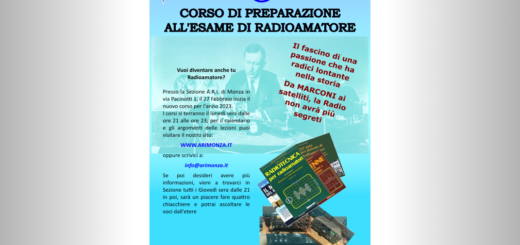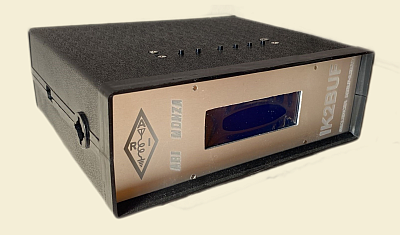contatto 14 Dicembre 2018
An International Space Station school contact has been planned for Serena Aunon-Chancellor KG5TMT with Kenilworth School and Sixth Form, Kenilworth, United Kingdom.
The event is scheduled Friday 14 December 2018 at approximately 12:55 UTC (13:55 CEWT).
The conversation will be conducted in English.
The contact will be a direct operated by GB4KSN.
The downlink signals will be audible in parts of Europe on 145.800 MHz FM.
School Information:
Kenilworth School and Sixth Form is located in the historic town of Kenilworth in Warwickshire England, we are effectively in the dead centre of England.
The school is made up of 1880 students and just over 200 teaching and support staff.
We are a true comprehensive school meaning that we do not select students on their academic abilities when starting school and teach students with a range of academic abilities. This being said, we are the top performing non selective school in the whole of Warwickshire, Coventry and Solihull based on last year’s GCSE results and have been judged as an Outstanding school by Ofsted and have recently been awarded World Class School status.
The school has a successful and very popular Space, Rocket and Robotics extra-curricular club run by Mr Harwood – Suther. Students have taken part in many activities such as building their own Galilean telescopes, rocket cars and taking part in a number of robotic competitions organised by VEX, as well as taking part in regular stargazing events. We have also been extremely lucky to have hosted samples of moon rock for our students to look at on two occasions.
The school has also been awarded the Space Education Quality Mark (Silver) as well as the Teen Tech Award Centre for Innovation (Silver).
Students First Names & Questions:
1. Max B. (Age 11): What surprised you the most when you entered space?
2. Jacob G. (Age 12): Do you believe there is some form of living extra-terrestrial intelligent lifeforms beyond earth, not just bacteria and fossils?
3. Eva R. (Age 11): During your training would you be able to describe your hardest moment and your most enjoyable experience from your training?
4. George J. (Age 11): How do you find the food in space compared to when you are back on earth?
5. Anya B. (Age 11): When you were a child did you always know you wanted to be an astronaut and fly to space?
6. John T. (Age 13): Where would you prefer to live, on board The ISS or Earth?
7. Elin B. (Age 11): What kind of plant life can be grown on the ISS as there is no oxygen or CO2 in space?
8. Alfie S. (Age 11): Why do liquids when poured out in space, always form round blobs?
9. Freddie B-S. (Age 12): From information that I have read, male astronauts say that “space” smells very metallic. Is it any different for female astronauts in space?
10. Dorottya V. (Age 12): How will it be possible to live on Mars and plant trees, flowers, and create an earth like environment?
11. Sam S. (Age 13): If you are in space, how does the zero gravity make you taller?
12. Clarissa/Elly (Age 12): Is the sunrise brighter than on earth?
13. Simon B. (Age 12): I am interested about Europa which orbits Jupiter. If life was found on Europa, what are the biological protocols to protect indigenous life and samples on or from other worlds?
14. Esme H. (Age 11): How long did it take to get used to life on the space station?
15. Matthew K. (Age 11): What is the daily day to day routine in regards to personal hygiene?
16. Megan M. (Age 12): This is your first visit to the to the International Space Station. What are your thoughts on another opportunity and perhaps take part in a spacewalk?
17. Nuala R. (Age 13): Does it feel like you’re moving when you’re on the ISS or do you just feel as though you are floating in the emptiness of space?
18. Lior I. (Age 14): What do you think will change in space stations in the future decade?
19. Melody H. (Age 11): What’s your favourite thing to do in space?
20. Flora V. (Age 11): When you come back to earth do you see the earth differently than you did before you left?
21. Tom E. (Age 11): What is the strangest thing you have seen in space?
About ARISS:
Amateur Radio on the International Space Station (ARISS) is a cooperative venture of international amateur radio societies and the space agencies that support the International Space Station: NASA, Russian Space Agency, ESA, JAXA, and CSA. The US Center for the Advancement of Science in Space (CASIS) and the National Aeronautics and Space Administration (NASA) provide ARISS special support.
ARISS offers an opportunity for students to experience the excitement of Amateur Radio by talking directly with crewmembers on board the International Space Station. Teachers, parents and communities see, first hand, how Amateur Radio and crewmembers on ISS can energize youngsters’ interest in science, technology, and learning.
The primary goal of ARISS is to promote exploration of science, technology, engineering, and mathematics (STEM) topics by organizing scheduled contacts via amateur radio between crew members aboard the ISS and students in classrooms or informal education venues. With the help of experienced amateur radio volunteers, ISS crews speak directly with large audiences in a variety of public forums. Before and during these radio contacts, students, teachers, parents, and communities learn about space, space technologies, and amateur radio. For more information, see www.ariss.org, www.ariss-eu.organd https://www.amsat-on.be/hamtv-summary/.






